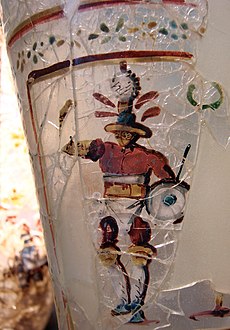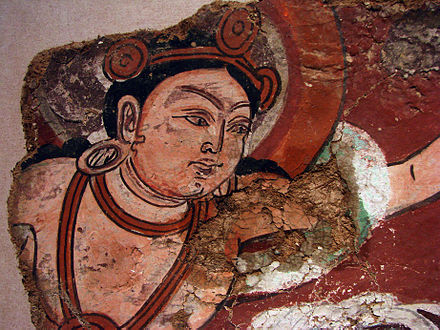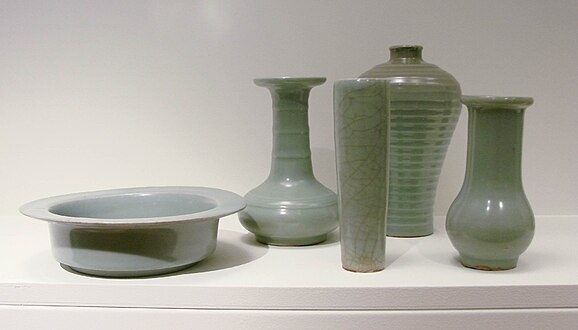Guimet Museum
The Museum Guimet (French Musée national des Arts asiatiques - Guimet , Musée Guimet for short ) is a state museum of Asian arts built in 1889 in the 16th arrondissement of Paris on the initiative of the industrialist Émile Guimet . Jeannine Auboyer redesigned it in 1960 and expanded it in 1991 to include the "Panthéon bouddhique" dépendance. A small Japanese garden belongs to the museum .
The aim of the museum located on the Place d'Iéna is to bring the nuances between the different Far Eastern civilizations closer to the European public in a didactic way.
Fundus
The museum has the largest collection of Asian sacred and art objects outside of Asia . The museum founder himself brought some of the original stock from his numerous trips to Paris. Between 1927 and 1938, the collection was initially expanded through expeditions to Central Asia and China . It also benefited from the construction of the Palais de Chaillot - on the occasion of the 1937 World's Fair - insofar as it had to give way to the Musée du Trocadéro , whose department of the arts of Indochina was transferred to the Musée Guimet.
Gallery (selection of works)
Gladiator, enamelled glass. Roman art, 1st cent., Treasure of Begam , Kapisa Province, Afghanistan.
Bodhisattva , art from Gandhara , 3rd century. Kushana empire . Mica slate . Pakistan.
Buddha in a Uttarâsangâ robe, early phase of the Gupta empire 6th century, Mathura school, red sandstone . India.
Wine bowl. Mughal Empire 13th century Jade , gold, rubies, emeralds. India.
Harihara ( Shiva et Vishnu ), Khmer art, sandstone , Takeo province , Phnom Da style. Cambodia.
Bodhisattva Lokeshvara , art of the Khmer 10th / 11th century. Cambodia.
(Presumably) head of Jayavarman VII. , 1181 - 1201 or 1218 , Bayon style. Cambodia.
Buddha . Wall painting from Kuqa , Tang Dynasty , first half of the 8th century. China.
Taotie mask, ivory. Shang dynasty , 11th century v. Chr.
Polo player. Tang Dynasty , first half of the 8th century. Terracotta.
Celadon ceramics. Longquan , Zhejiang Province, Southern Song Dynasty , Southern China.
Wang Hui , 1632-1717. The forest under hoarfrost on a clear evening in the style of Wang Meng . Ink and light colors on paper. Last quarter of the Qing Dynasty . Cutout.
Vase with a floral motif. Porcelain from Jiangxi Province, end of the reign of Qianlong (1736–1795), Qing dynasty . South china.
Meditating Bodhisattva. Period of the Three Kingdoms , 7th century, Kingdom of Baekje . Gilded bronze, h. 15.5 cm.
Dogū figure made of terracotta Kantō or Tōhoku province, late Jōmon period 10th to 3rd century. v. BC, Japan.
Mask of a "youth" in the Nō theater from the Edo period (1603–1868), varnished and painted wood. Japan.
Katsushika Hokusai : From the series Thousand Pictures of the Ocean , 1832–1834. Japanese color woodcut in the format chuban : 19 × 24.5 cm.
See also
literature
- Emile Guimet: Huit jours aux Indes in: Le Tour du Monde , new edition, Paris, 2007, Phébus, ISBN 978-2-7529-0251-1
Web links
- Website of the Guimet Museum (Chinese / English / French)
Coordinates: 48 ° 51 ′ 54.7 " N , 2 ° 17 ′ 37.6" E




















